
When designing a commercial HVAC system that will serve a diversity of spaces, selecting a VAV air side system has proven to be the best choice. A mechanical engineer has two goals for their future occupants, deliver optimal comfort at the lowest possible energy usage; in that order. When compared to other options, the VAV System wins on both fronts.
Comfort equals Profits
Fundamentally, the goal of an office real estate developer is to construct a building who’s financing and operational costs will be less than the rent the building will provide. The developer hopes the building will attract and retain occupants by providing the best comfort, location, design, and amenities possible with the construction budget. They’ll also have an eye towards energy efficiency to reduce the operation costs associated with the building on an ongoing basis. This includes the adaptability of the system for future needs.
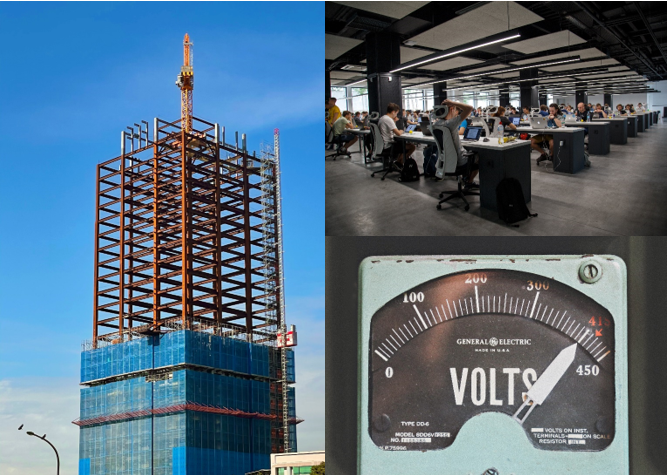
Once built, companies choose their office based on these factors and are acutely aware of the comfort of their employees. Especially since a comfortable working environment is directly proportional to the productivity of the office. While energy use associated with the HVAC system will average $0.50-$0.70 per sq. ft/year, the rent costs between $20-700/sq. ft. per year and the salaries range from $300-$2,000/sq.ft. per year. While energy costs are critical and should be reduced as much as possible, maintaining a comfortable work environment is a much larger economic concern for the building owner and the employer occupying the space.
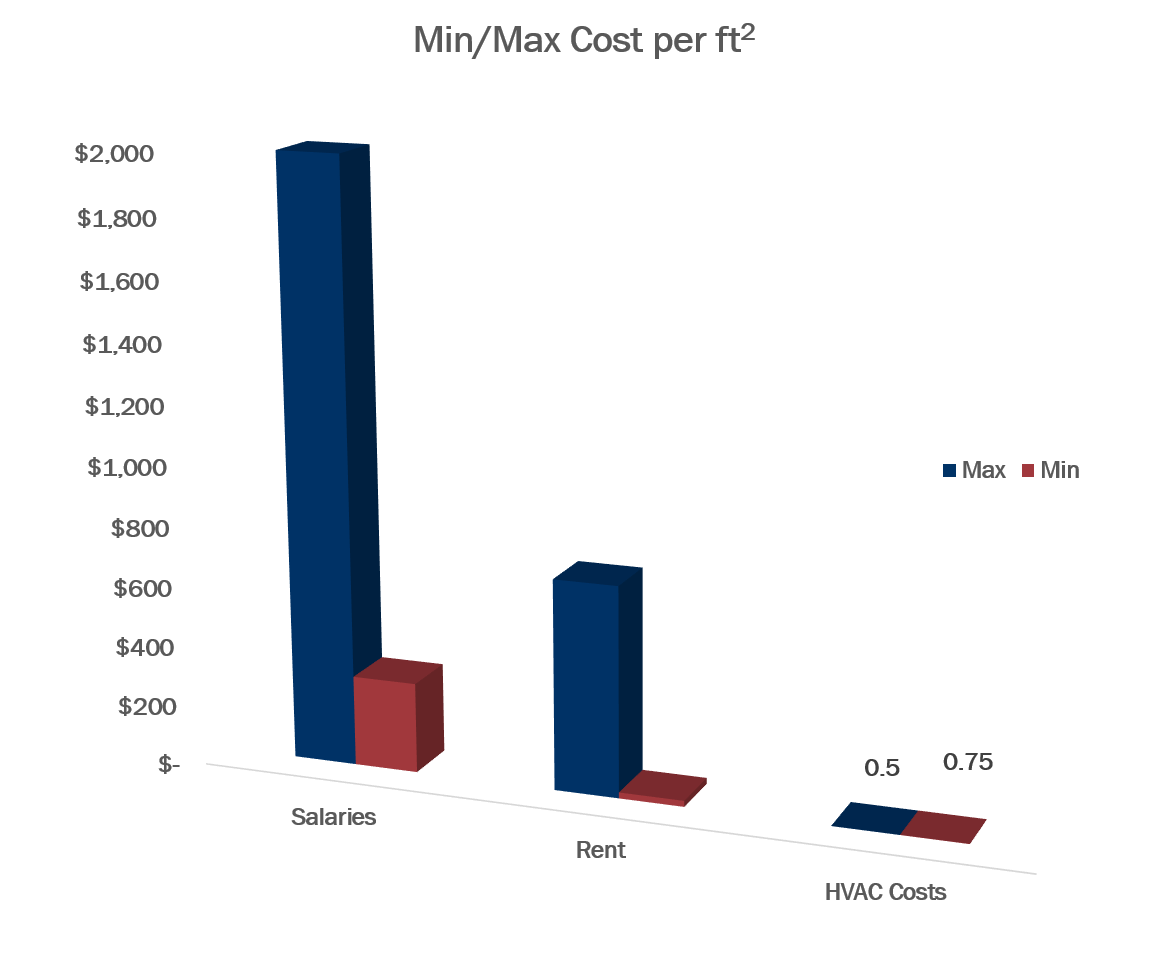
What is Comfort?
Leesman is a global workplace benchmarking company. They deploy surveys to employees about their workplace so that companies can understand how the workplace they provide compares to others and identify room for improvement. They publish some of their data on their website, including the question:
Thinking about the work that you do, which of the following physical/service features are important and how satisfied are you?
The results of the top 15 work variables are below:
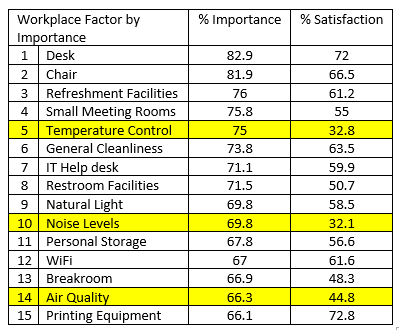
What I find interesting about this data is that the HVAC system can affect 3 out of the top 15 factors and of all the top 15 these factors have the lowest satisfaction level. This is obvious if you re-order the top 15 factors by % satisfaction.
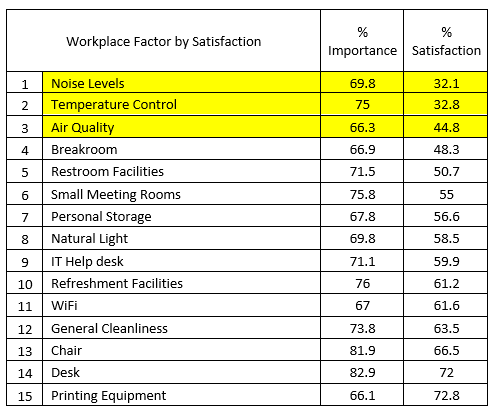
This provides a large opportunity for office buildings and developments to differentiate themselves from the competition by providing more satisfactory temperature control, noise levels, and air quality to their occupants. The best solution to exceed occupant expectations is to choose a properly designed VAV HVAC system.
Variable Air Volume System Overview
A Variable Air Volume (VAV) system is characterized by a central air handling unit that conditions and delivers recirculated and ventilation air through ductwork to a series of terminal units. Within the space there are terminal units that serve the individual occupancies. The terminal units are controlled by thermostats in each occupancy they serve and deliver the right amount and temperature of air to maintain the sensor set point. The system will cycle up and down according to individual room demand.
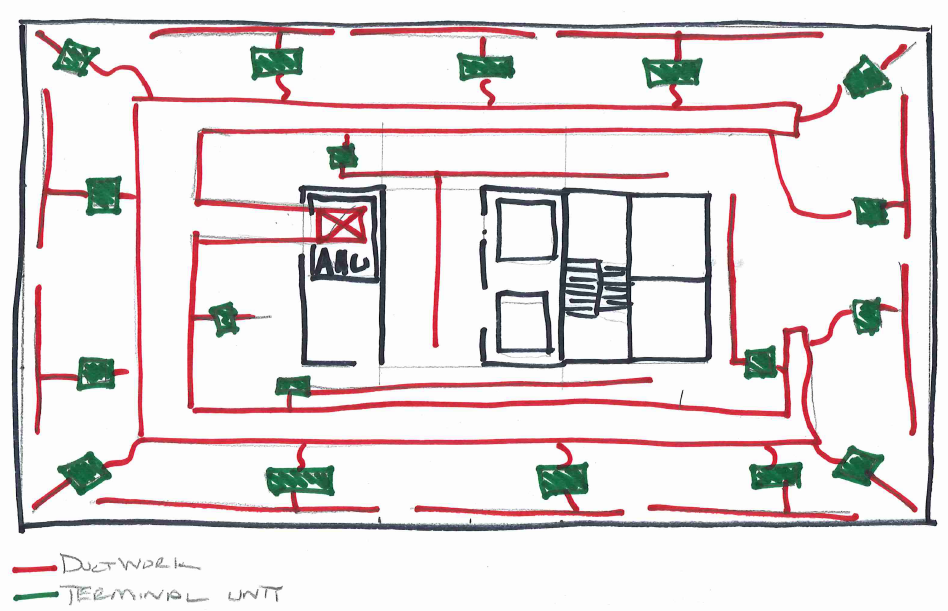
Each terminal unit in the system is charged with providing air flows at a certain temperature to the space it serves to meet the thermostat set point in the space. At a minimum, the terminal unit has an air flow sensor and a damper. If the space temperature rises above the set point, the damper will open and the air flow sensor will ensure that more air is delivered to the space to satisfy the thermostat. If the air flow doesn’t increase, the terminal unit will send a request to the air handling unit for an increase in air flow. The air handling unit will increase its air flows until the space load is satisfied. As the thermostat reaches the set point:
- The Terminal Unit damper will close
- The AHU Fan will slow down
- The AHU chilled water valve will modulate down
- The chiller ultimately will respond by modulating down
Eventually an equilibrium of air flow will be reached to continuously satisfy the demand in the space. Not only does this provide comfort to the occupant during part load conditions, it allows every piece of HVAC equipment to reduce its load, providing significant energy savings for the operation of the building.
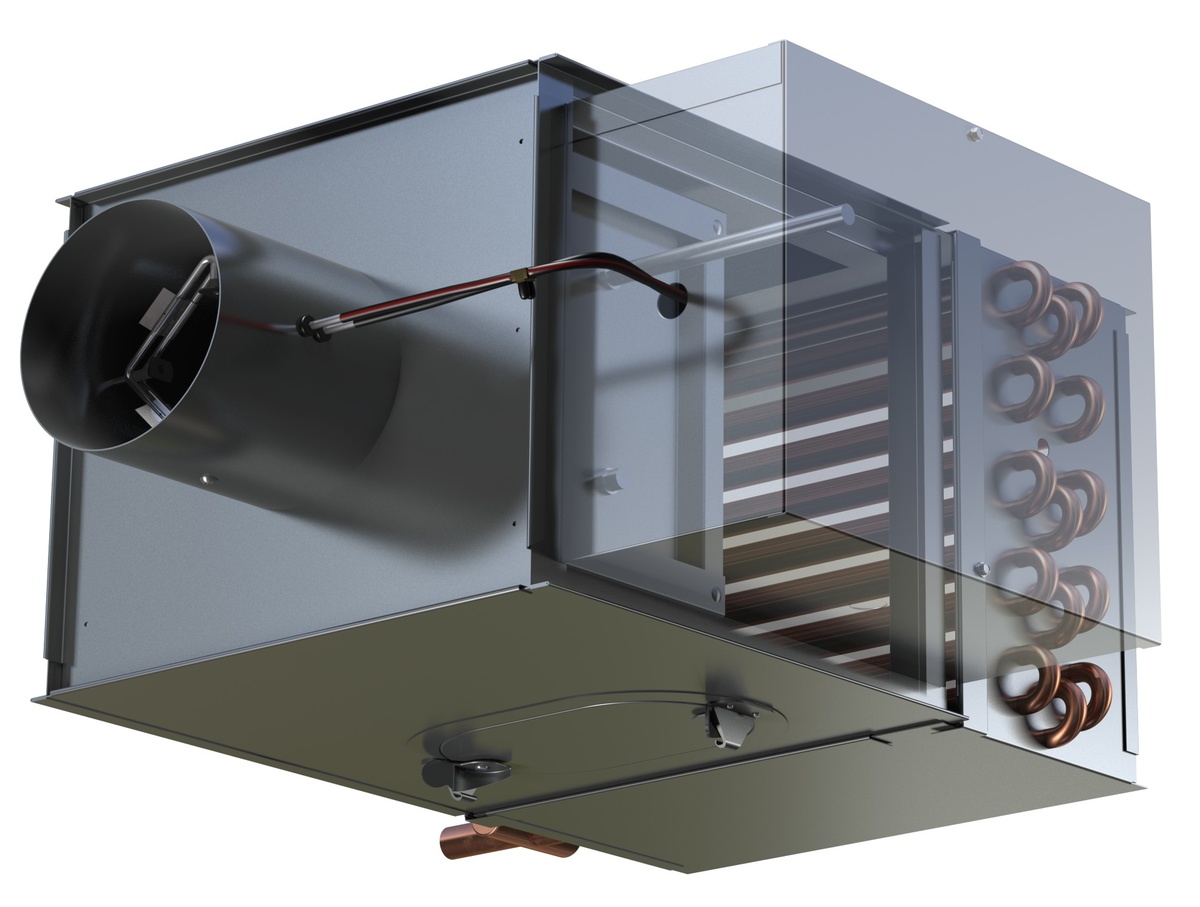
This general control sequence will be repeated for each of the terminal units in the system to maintain comfort in the space.
VAV Benefits
When a mechanical engineer is sizing heating and cooling equipment for a space, they must design the system to accommodate the extremes of the load. To maintain the comfort of the occupants year-round, the system must be able to handle the hottest and coldest days of the year. For most of the year, the system installed to control the comfort in the space is oversized. Employing a VAV air handling unit allows the system to run in part load while being ready to meet the needs of the building load extremes. This increases energy efficiency as well as occupant comfort.
Each space served by a central air handling unit will contain a diversity of occupancies. The heating and cooling needs for a computer room are different from an office. Also, it will serve a diversity of people. Some people may be more comfortable 2 degrees cooler than others. As shown above Temperature Control is the number one non-office space/equipment factor in determining occupant comfort. The VAV system allows for multiple spaces to be controlled separately, better meeting the needs of a diverse space.
In many VAV systems the heating is provided at the terminal unit. This further enables serving a diversity of spaces, allowing different occupancies to be cooled or heated at the same time.
VAV systems are flexible, if the AHU is properly designed for max cooling/heating of the space, additional terminal units designed to provide additional control for the occupants can be added easily to the system.
With the higher control capability offered with VAV systems, occupancy sensors and CO2 monitors can be employed to control and ensure proper air quality.
Because the system will operate at part load most of the time, the VAV system will deliver superior noise levels when compared to other systems.
VAV delivers Comfort
Occupant comfort is critical to the productivity of a company and the profitability of a real estate development. The flexibility, controllability, and diversity offered by a VAV system make it the proper choice to deliver comfort to occupants. This is the first in a series of articles designed to provide information on every aspect of VAV systems available today. If you’d like to know more or have any questions we can help with don’t hesitate to reach out to us.